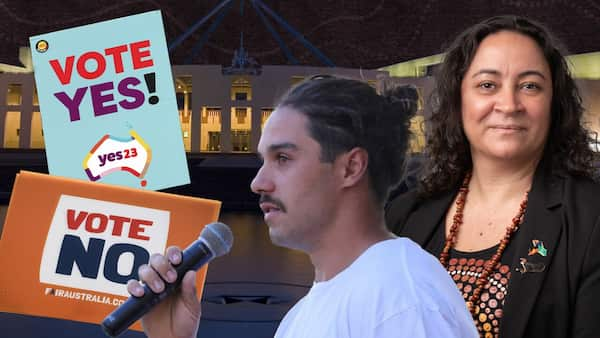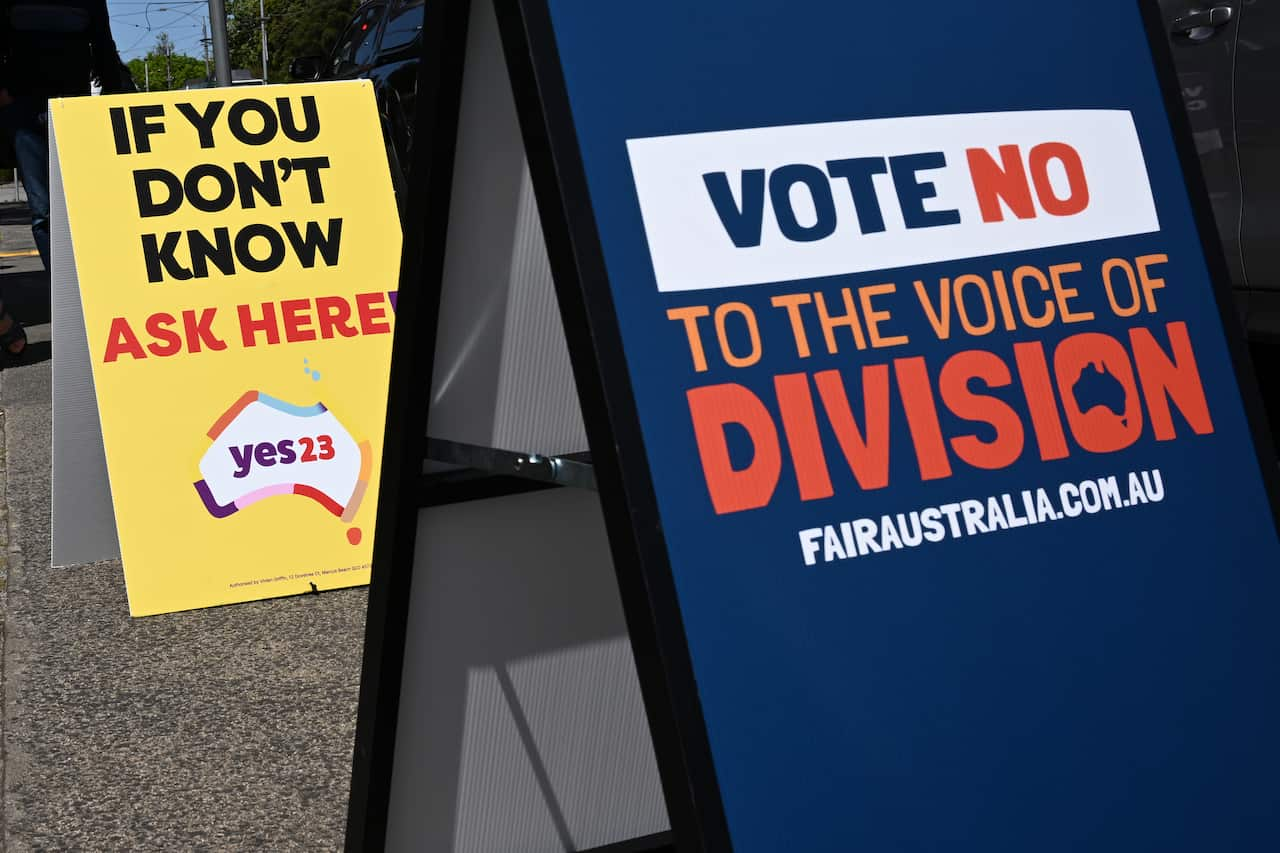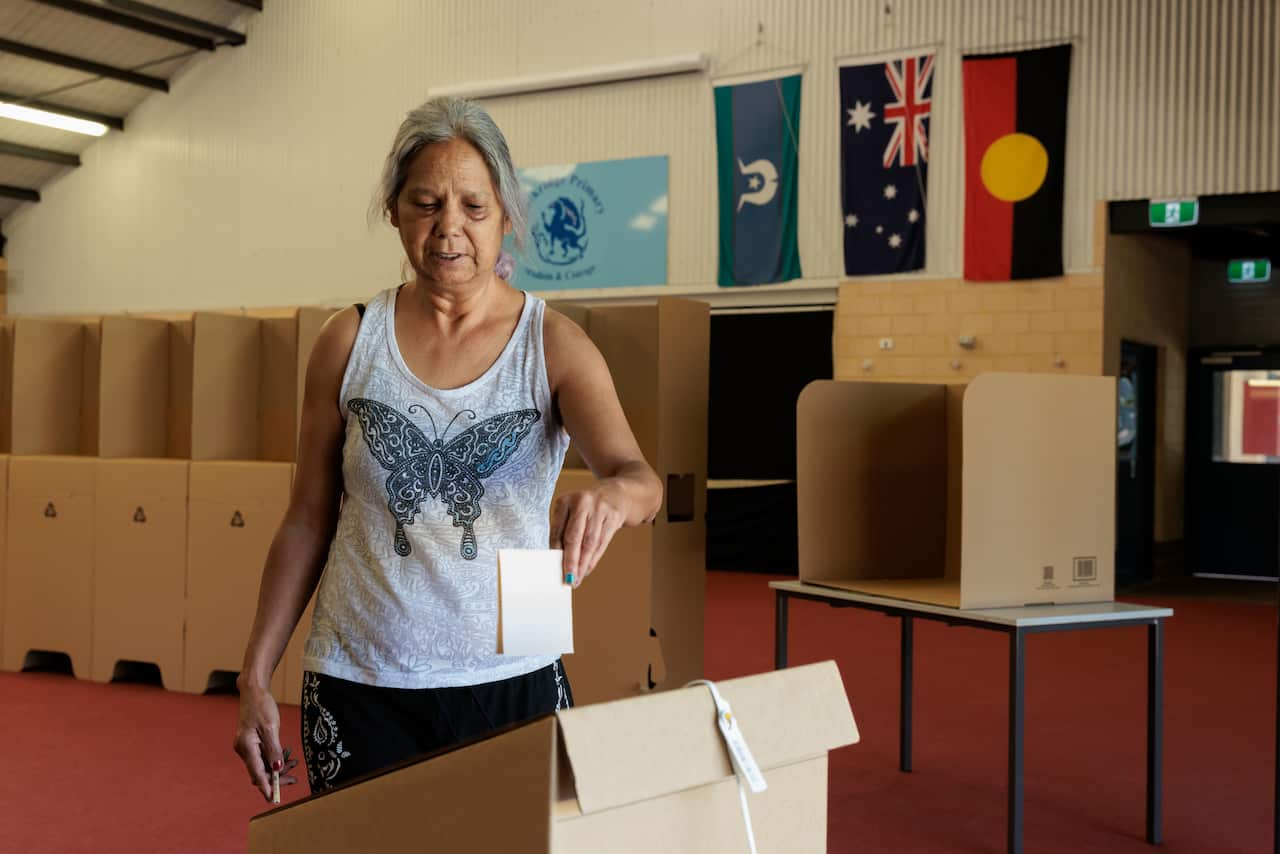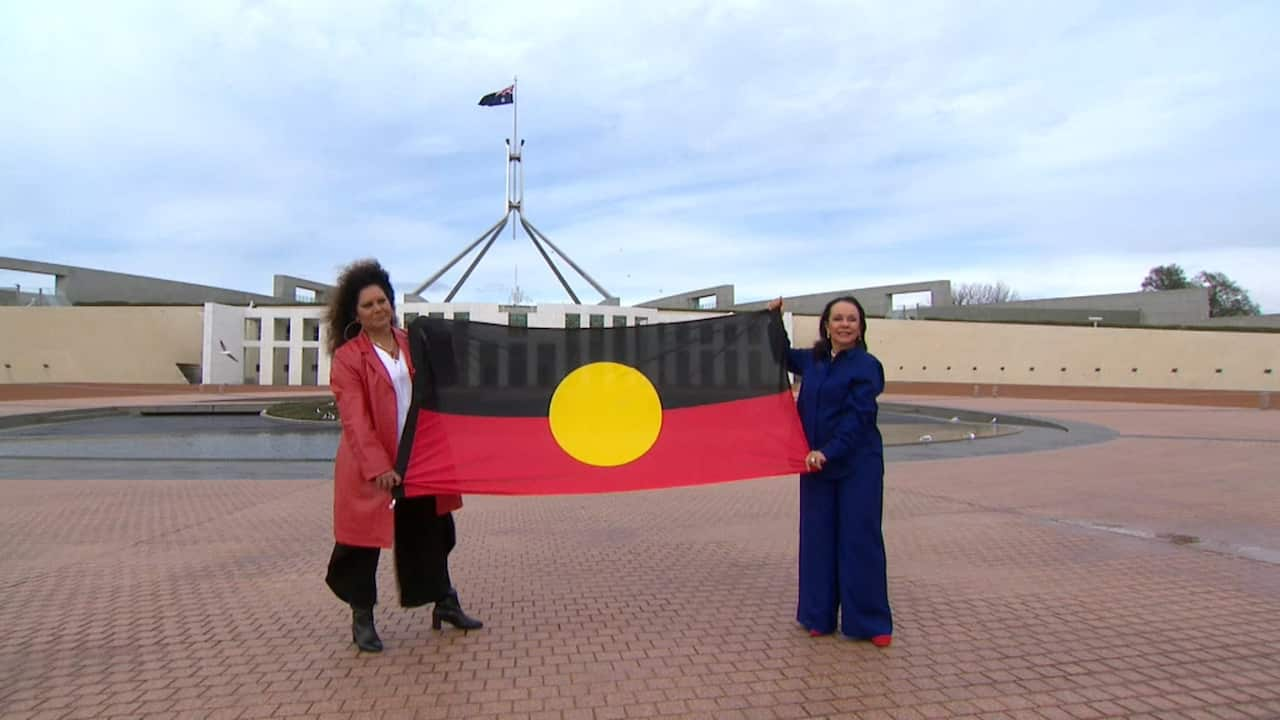On October 14, 2023, Conor Bowden was at Cairns footy club with his Yolgnu Elders, watching the Voice to Parliament referendum results filter in.
“Within thirty minutes it was gone, done and dusted,” he told SBS Examines.
“I was sitting there with those Old People and it was just deflating to see them and their reaction to Australia, again probably not for the first time in their life, or the second time in their life, saying no and turning them down, and their communities down.”
Sixty per cent of Australians rejected the proposal for a Voice to Parliament, with each state and territory, excluding the Australian Capital Territory, voting against it.
The Voice to Parliament sought form as an advisory body to government on matters affecting Aboriginal and Torres Strait Islander peoples.
Its enshrinement in the Constitution would have provided security from changing governments and recognise Aboriginal and Torres Strait Islander peoples as the First Peoples of the nation.
It was part of Voice, Treaty, Truth – the mission of the Uluru Statement From the Heart.
Fighting misinformation with ‘bush explainers’
Conor’s family had been instrumental in creating the Uluru Statement and championed the Voice to Parliament.
“It had never been something evil, even from its conception and no one there wanted anything more than just a seat at the table to help their own communities, especially families from the bush,” the Talagala and Gumatji man said.
As the campaigns began, he posted videos explaining the Voice and how it would function to his social media.
He found himself fighting a constant stream of misinformation.
“Instead of me just being able to teach and pass knowledge on, it was thwarted with me having to undo all these lies that people had been told,” he said.
“I had the same conversation a thousand times, to a thousand different people on three different platforms.”
Campaign pushing ‘misleading, inaccurate claims’
Professor of public and Parliamentary law and Constitutional advisor to the Referendum Council, Professor Gabrielle Appleby was one of the many experts fact-checking referendum information.
She said the campaign was “not a contest of informed ideas” but saw “misleading, inaccurate claims” being pedalled.
Vote Yes and Vote No signage at an early voting centre for the Indigenous voice to parliament referendum in Melbourne, Monday, October 2, 2023. (AAP Image/Joel Carrett) NO ARCHIVING Source: AAP / Joel Carrett
Professor Appleby fact-checked the official Yes and No Campaign pamphlets.
“What we saw was that the Yes pamphlet was largely accurate, they were based on fact, they were based on historical record, they provided full context and were supported by what research exists,” she said.
“The No pamphlet’s claims were by and large misleading, they were taken out of context, a lot of relevant information was omitted, historical context was omitted and statements were just unsupported by research.”
In a statement to SBS Examines, Shadow Minister for Indigenous Affairs and No Campaigner Jacinta Nampijinpa Price said “much of the fact-checking undertaken with respect to the Voice Referendum to date has not been objective”.
She alleged it favoured the Yes campaign.
“There were always going to be those who would seek to undermine the validity of the referendum outcome because it didn’t align with what they wanted,” she said.
Racial division already exists
Professor Appleby came across reoccurring pieces of misinformation. Some common theme included the Voice being a “Trojan horse” and leading the way for radical groups to influence Parliament, it would force Aboriginal and Torres Strait Islander people to cede Sovereignty, increase tax and repossess non-Indigenous people’s houses.
The most popular was the claim the Voice would segregate Australians based on race.
“Our Constitution already divides people on the basis of race,” she explained.
“It has the power to make laws for people of a particular race and the only people that’s been used against historically, is Aboriginal and Torres Strait Islander people and it’s been used in ways that have negatively impacted them.”
She noted the Racial Discrimination Act has been suspended to make way for such laws.
This includes the Northern Territory Emergency Response Act of 2007, which enabled the NT Intervention.
“This claim that this amendment is going to introduce race and division is decontextualised from all that history,” she said.
‘The racism was automatic’
For Conor, so much of the misinformation was laced with racism.
“We sit on this rhetoric that Aboriginal people want to take your backyard, or they want to tax your job more, or they want to take away your income, when it’s not true. All these people out in community, they just want to be able to live their life happily,” he said.
After the referendum, Indigenous-led national crisis hotline 13YARN were facing 100 calls daily.
In the first two weeks of November, 25 per cent of the calls were reports of racial vilification or abuse.
Aboriginal and Torres Strait Islander Social Justice Commissioner Katie Kiss believes the referendum defeat was the catalyst.
“The referendum has had diabolical consequences for First Nations policy in this country, we can under automatic fire,” she said.
“The racism was automatic.
“I do believe that the referendum result has given certain cohorts within the community a sense of freedom to perpetuate racism, racial hatred and racial vilification.”
Members of the public vote at Lockridge Primary School voting centre in Perth. Source: AAP / Richard Wainwright/AAP Image
Fractured social cohesion
Conor said he remains a target of racism because of his videos.
“The thing was, when the referendum finished, the comments on your phone didn’t stop,” he said.
“I was even a bit hesitant talking to people after the referendum. I remember walking to the shops and thinking I’m not really comfortable here.”
He isn’t alone in this feeling.
“I had my son call me, two days after the referendum vote. He said to me, Mum, I can’t do this. How can I walk out on the street when I know these people don’t want me here?” Commissioner Kiss said.
“In the days after, in the months after, and for some still to this day, we are questioning our sense of belonging in this country.
“The impact of this has been absolutely extreme on our people, on our people’s hearts, on our people’s minds and on our people’s souls.”
Mis and disinformation heavily influenced how Australians voted on October 14, and has impacted the nation’s progress towards social cohesion.
The former Minister for Indigenous Affairs Linda Burney and now Minister Malarndirri McCarthy holding the Aboriginal flag outside Canberra’s Parliament House. Source: NITV / SBS News
While some pronounced reconciliation dead, in her post-referendum address former Minister for Indigenous Affairs Linda Burney offered hope.
“To all Aboriginal and Torres Strait Islander people . . . be proud of who you are, be proud of your identity, be proud of the 65,000 years of history and culture that you are a part of and your rightful place in this country,” she said.
“We will carry on, and we will move forward, and we will thrive. This is not the end of reconciliation.”
This article was produced by SBS Examines. SBS Examines is focused on misinformation and disinformation that impacts social cohesion. For more information, visit:



